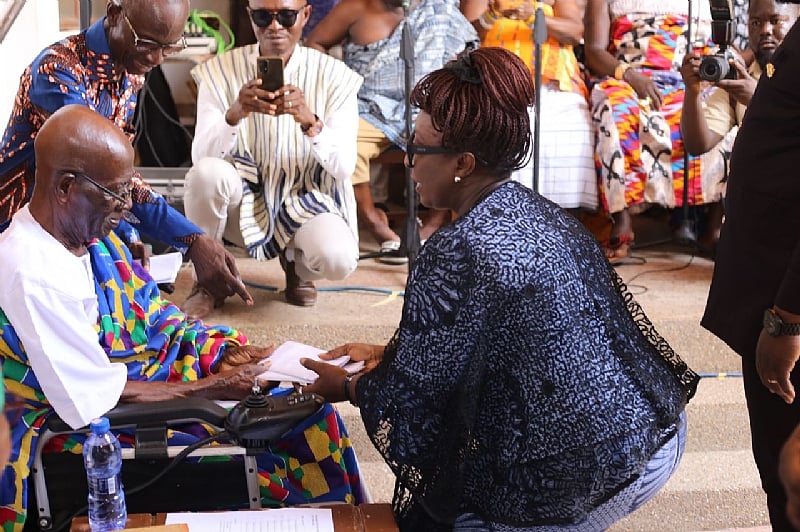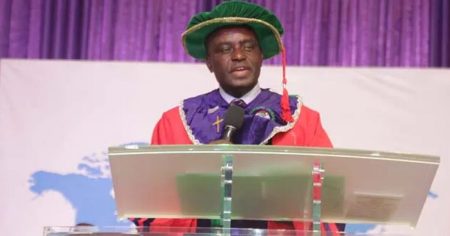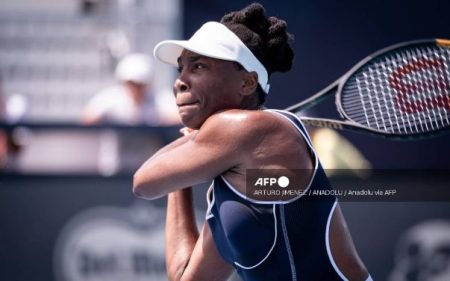The visit of Madam Abla Dzifa Gomashie, Ghana’s Minister for Tourism, Culture, and Creative Arts, to highlife legend Agya Koo Nimo in Kumasi served as a powerful symbol of the government’s commitment to honoring and supporting the nation’s cultural pioneers. This gesture, reflecting President Mahama’s focus on the well-being of elderly citizens who have shaped the nation’s artistic landscape, underscores the importance of recognizing and celebrating the contributions of individuals who have dedicated their lives to enriching Ghana’s cultural heritage. The minister’s presence not only offered a personal expression of gratitude to Agya Koo Nimo for his profound influence on Ghanaian music but also signaled a broader initiative to provide tangible support and recognition to veteran artists across the country. The visit resonated as both a touching tribute to a musical icon and a promise of greater appreciation for the invaluable contributions of Ghana’s creative elders.
The minister’s words emphasized the significance of the occasion, framing it as an act of care, recognition, and national responsibility. While plans for a more formal celebration of cultural elders are underway, the immediate and personal nature of the visit highlighted the urgency of acknowledging their impact. Presenting Agya Koo Nimo with a hamper and a cash donation, which was intended to extend support to the performers who honored him with their music during the visit, further solidified the government’s commitment to providing practical assistance to those who have dedicated their lives to artistic pursuits. The minister’s actions demonstrated that appreciation for cultural contributions goes beyond mere words and extends to concrete acts of support and acknowledgment.
Madam Gomashie’s observations during the visit also highlighted the disparity in recognition between artists and individuals in other fields, particularly sports. She pointedly contrasted the widespread acclaim and media attention showered on athletes with the often-unsung contributions of artists whose work deeply impacts society. This observation served as a call for a shift in perspective, urging a greater appreciation for the profound influence of creative endeavors on the nation’s cultural fabric. The minister’s remarks challenged the prevailing narrative that tends to prioritize athletic achievements over artistic contributions, advocating for a more balanced recognition of those who enrich the nation through their creative talents.
The visit to Agya Koo Nimo, therefore, marked the beginning of a sustained effort to celebrate and support Ghana’s cultural icons. It signaled a shift towards a more proactive approach to recognizing the contributions of artists, ensuring that their legacies are preserved and celebrated for generations to come. This commitment represents a significant step towards building a more inclusive and appreciative cultural landscape, where artists are acknowledged and supported for the invaluable contributions they make to Ghanaian society. This initiative promises a future where artists are not only celebrated in their twilight years but are also provided with the resources and platforms to continue contributing to the nation’s artistic growth.
Agya Koo Nimo’s response to the gesture was one of profound gratitude, acknowledging the support not just for himself but for all musicians in Ghana. His call for the establishment of a national museum to safeguard the works of Ghanaian artists further emphasized the importance of preserving cultural heritage for future generations. This proposition highlights the need for a dedicated space to showcase and protect the diverse artistic expressions that have shaped Ghana’s cultural identity. Such a museum would serve as a testament to the nation’s rich artistic history and provide a platform for future generations to learn from and be inspired by the works of their predecessors.
Furthermore, Agya Koo Nimo’s suggestion to incorporate local music into tourist destinations serves as a strategic move to promote Ghanaian culture to a wider audience. By exposing visitors to the vibrant tapestry of Ghanaian music, the nation can share its unique cultural identity and foster a deeper appreciation for its artistic heritage. Integrating local music into tourist experiences not only enriches the visitor’s understanding of Ghanaian culture but also creates opportunities for local musicians to showcase their talents and contribute to the nation’s tourism sector. This proposal highlights the potential of cultural tourism as a powerful tool for both economic development and cultural preservation. In essence, the visit of the minister to Agya Koo Nimo served as a catalyst for a broader conversation about the importance of recognizing, supporting, and promoting Ghana’s rich cultural heritage.














